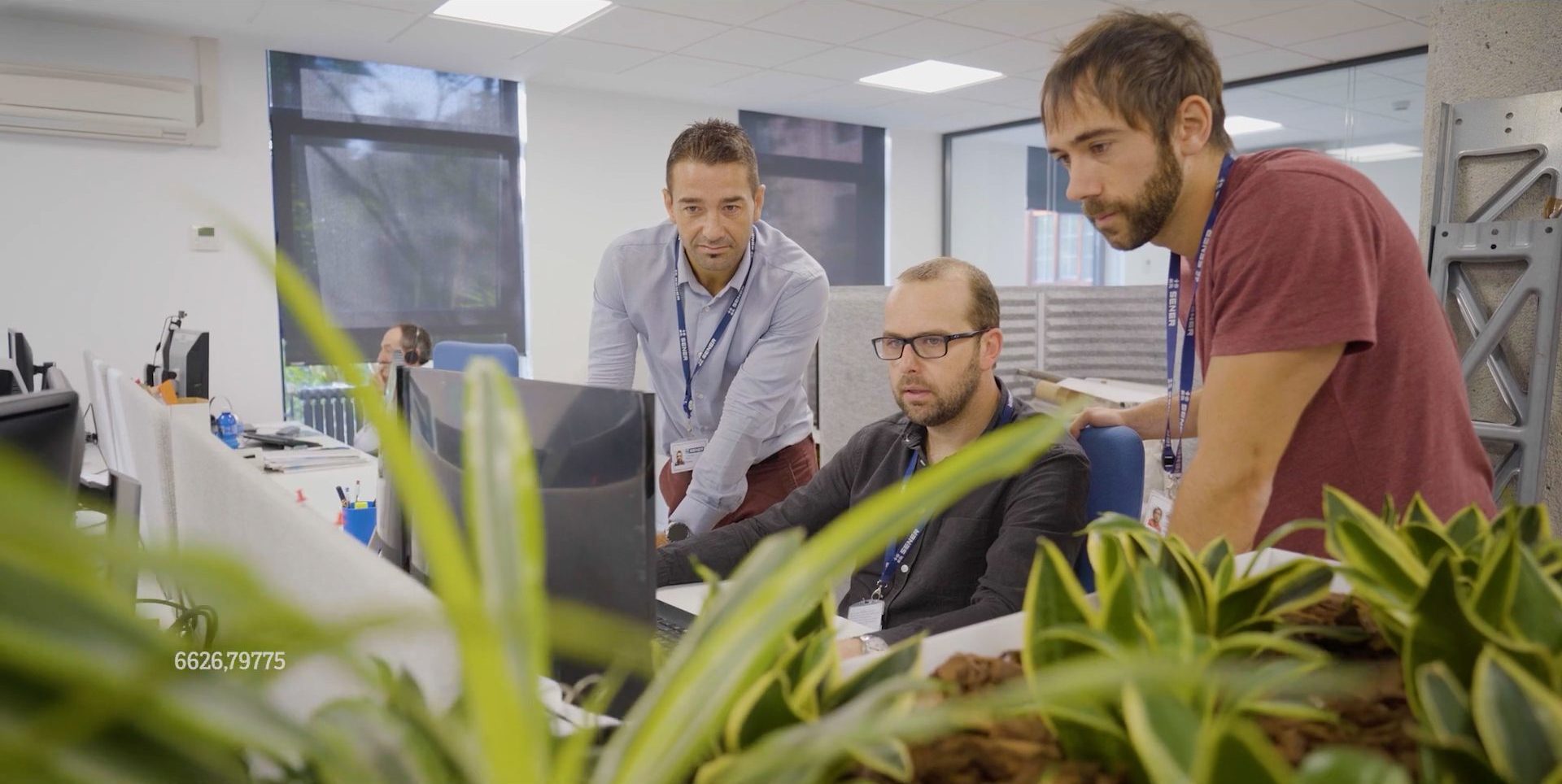






They use quantum algorithms to simulate the best possible operation of each process carried out in an electrolysis plant.
The project forms part of the digitalisation objectives of the IPCEI (Important Project of Common European Interest) programme developed by Sener, aimed at improving electrolysis technologies and reducing the levelised cost of hydrogen, and will be presented during the 6th meeting of the Production vertical of the Basque Hydrogen Corridor (BH2C) on 25 September.
The engineering and technology group Sener and Ayesa have developed a proof of concept through a quantum solution to optimise operational simulations of electrolysis plants carried out with SenHy, Sener’s digital tool. This solution enables simulation of all processes involved in hydrogen generation using quantum algorithms, from managing the different sources of electrical energy (solar generators, grid purchases, battery storage), through the operation of electrolysis modules and their degradation management, to adjusting hydrogen output flow to align with demand forecasts.
The project forms part of the digitalisation objectives of the IPCEI programme developed by Sener, aimed at advancing electrolysis technologies and reducing the levelised cost of hydrogen (LCOH). To this end, the group has created SenHy, an innovative operational simulation tool for electrolysis plants that integrates different electricity supply profiles into an operational simulation. The project will be presented during the 6th meeting of the Production vertical of the Basque Hydrogen Corridor (BH2C), to be held on 25 September.
SenHy faces a significant technical challenge: solving every minute a complex multiphysics optimisation problem based on the current and potential state of energy profiles and the plant’s operating parameters. Given the limitations of traditional computational tools, the model had to be simplified to meet response time requirements. To accelerate this process and exploit the full complexity of the multiphysics model, Sener carried out a proof of concept based on a quantum computing algorithm provided by Ayesa. The result was successful: a simplified problem was solved with the same quality of solution in one-tenth of the time, paving the way to simulate more complex cases and significantly improve simulation accuracy.
This holistic approach, combined with the inherent scalability of quantum logic, enables proposals for optimal plant operation to be obtained with very short simulation times. This allows for precise planning to extend beyond the simulation periods achievable with the classical (non-quantum) strategy used until now.
Rapid resolution of complex problems
Electrolyser plants are facilities that, by applying electrical currents, are capable of separating hydrogen and oxygen contained in water molecules. The hydrogen generated has multiple applications in industry and research, and can also be used as a clean fuel.
It is a highly complex process that, until now, when operational issues arose, was addressed with classical methods, which were able to deliver quality output within reasonable times but only for moderately complex problems. “As complexity or scale increases, analysis times become prohibitive and it becomes necessary to resort to approximations or extrapolations to obtain results that are no more than indicative.”
So explains Iñigo Pérez Delgado, project lead at Ayesa, who adds: “We sought a scalable tool capable of delivering high-quality results in short execution times thanks to a quantum method, tested in the range where the classical process is still able to confirm the quality of results. The inclusion of a quantum algorithm makes it possible to assess scenarios of greater scale and complexity.”
The use of quantum logic means that an increase in the complexity of the conditions to be met, which in the classical case entails an exponential scaling of difficulty, hardly increases the processing capacity required to solve the problem. “In this IPCEI project, therefore, the main objective was to develop a method capable of delivering scalable results, even if at the scale analysed no speed advantage was obtained,” he states.
“However,” Pérez Delgado continues, “it has been observed that the problem analysed, though moderate in size, is already large enough for the scalability of the quantum method to provide a speed advantage of an order of magnitude. Therefore, our results confirm that quantum computing is already capable of delivering differential results in industry.”
According to Alfonso Corbella, R&D project director in H2 at Sener: “The application of technologies such as quantum computing allows us to tackle with greater accuracy the operational optimisation of complex processes such as those taking place in an electrolysis plant. This advanced simulation capability not only improves efficiency, but also paves the way towards broader adoption of green hydrogen, an area in which Sener has extensive experience.”